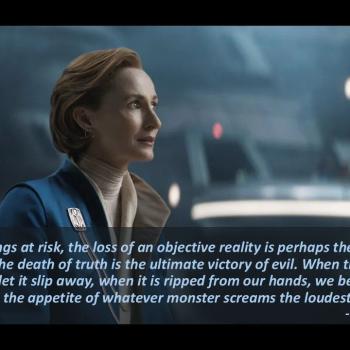Doug Chaplin has interacted with me on the subject of historians and the resurrection, following up on an earlier post about the empty tomb.
John Hobbins has tagged me with a meme (in response to Doug), his version of which is as follows:
(1) Name one idea that used to be seen as a key halachic or aggadic emphasis, but is nowadays regarded as either irrelevant or outdated, although you think it still has a lot to offer.
(2) In two sentences say something about why you selected this, and why it should be recovered or renewed.
(3) Tag three people.
My inclination is to respond to John’s own choice of hell fire preaching by pointing out that there are rabbinic references to a limit on the duration of post-mortem torment.
Beit Shammai taught: There are three groups – one is destined for eternal life, another consigned to eternal ignominy and eternal abhorrence (these are the thoroughly wicked) while those whose deeds are balanced will go down to Gehinnom, but when they scream they will ascend fro there and are healed…but Beit Hillel taught: [God is] rich in kindness’ (Ex. 34:6) [He is] inclined toward mercy (Tosefta Sanhedrin 13:3)
‘The judgment on the generation of the Flood was for twelve months, on Job for twelve months, on the Egyptians for twelve months, on Gog and Magog in the Hereafter for twelve months, and on the wicked in Gehinnom for twelve months. (M. Eduyot 2:10; Gen. Rabbah 28:8)
Rabbi Akiba said:…The duration of the punishment of the wicked in Gehinnom is twelve months. (Shabbat 33b)
After 12 months, their body is consumed and their soul is burned and the wind scatters them under the soles of the feet of the righteous (Rosh Hashanah 17a)
But I think the reason I value these rabbinic texts is because of something deeper, namely that, much like what goes on in the biblioblogosphere, the rabbis discussed, debated, and disagreed, but continued the dialogue. And the tradition of doing that, of not silencing those with whom we disagree, that I value even more than the views of individual rabbis on the topic of punishments in the afterlife.
I tag Mark Goodacre (since he may want the opportunity to look back with fondness on the days before the Q hypothesis), Ken Brown, and Steve Martin (to give the meme a chance to branch out beyond Biblical studies, if it can, since there is so much interesting ancient reflection on the creation narratives in light of philosophy and other considerations).
I was also interested to learn that John Rutter, composer of a lot of great religious choral music, is an agnostic. Here’s a quote from an article from several years ago:
When I press him on the truth of the Christmas story in all those carols, he prevaricates.
“That’s like asking if a Beethoven symphony is true: it’s not a question that gets you very far. The questions I’d ask about the Christmas story, or Beethoven, are: is it inspiring, is it uplifting, and does it have something to say to us today? Answer: yes, yes, yes.
“I guess I take the same line as Vaughan Williams who said: OK, I’m agnostic, but I wouldn’t be who I am if it weren’t for Christianity. It’s given me my values and a strong sense of faith. But I’m a fellow-traveller rather than a believer.”












